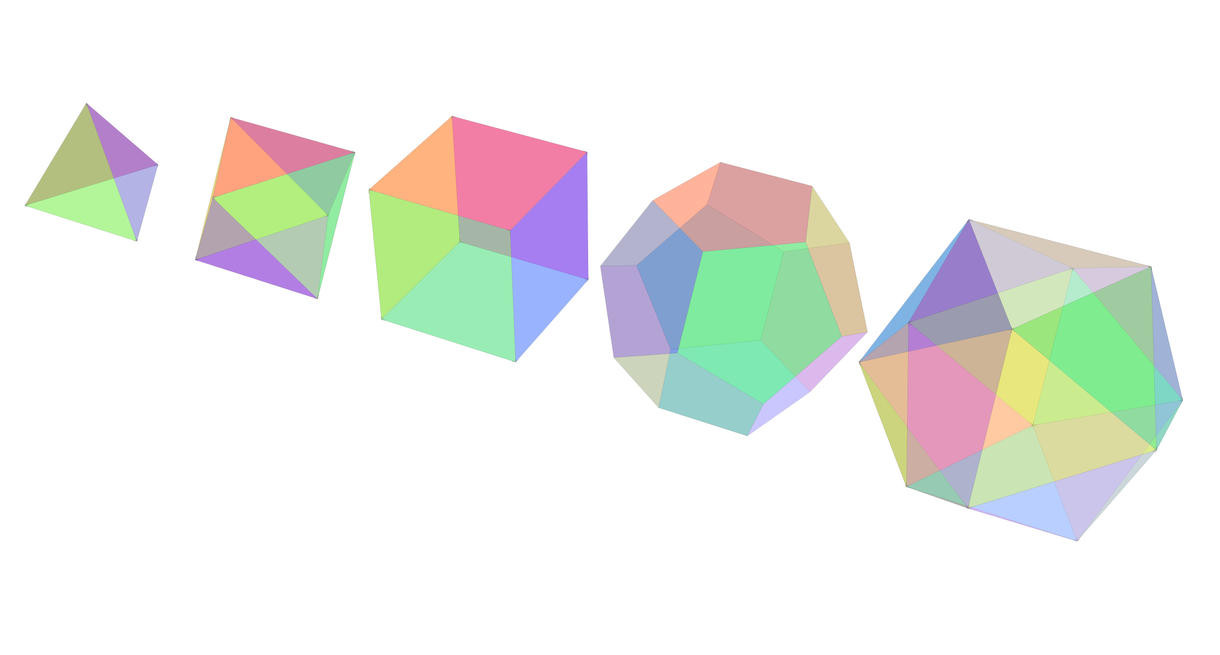Polyhedron (5e Creature)
Polyhedron[edit]
|
Medium construct, chaotic neutral Armor Class 10 (natural armor)
Saving Throws Intelligence Polyhedron Type. Polyhedra come in many different shapes. Upon creation, select one of the following polyhedron types:
Challenge Rating. A polyhedron's Challenge Rating is its number of sides divided by 2. See the Monster's Manual for the CR's corresponding XP. Strength and Armor Class. A polyhedron's Strength score and its Armor Class are both increased by its number of sides divided by 2. Health. A polyhedron's hit points are increased by the number of sides it has. Dormant Solid. A polyhedron resembles an ordinary (though somewhat large) geometric solid when it is "sleeping," and as such has advantage on stealth checks in this state. ACTIONSSlam. Melee Weapon Attack: +6 to hit, reach 5 ft., one target. Hit: 7 (2d4 + 2) bludgeoning damage. Rolling Energy (Recharge 3-6). Ranged Spell attack: The polyhedron selects a number of creatures within 50 feet of it that it can see. The number of creatures it can target is equal to the number of sides it has divided by 2. It then fires a beam of energy at each one and forces each of the targeted creatures to make a Wisdom save (the DC for this is equal to the number of sides the polyhedron has). A creature takes 3d6 radiant damage on a failed save, or half as much on a successful one. Roll of the Dice (Number of Sides/Day). Ranged Spell attack: The polyhedron selects up to 1d6 creatures that it can see and forces them to make a Wisdom saving throw. On a fail, the creatures roll two dice with a number of sides equal to the number of sides on the attacking polyhedron and take that amount of psychic damage. On a success, the targeted creatures roll one die. For example, if a player fails a Wisdom saving throw against an octahedron making this attack, he or she will take 2d8 psychic damage.
|
Polyhedra are made in the form of each of the five Platonic solids. When they are dormant, or "sleeping," they simply appear to be a large geometric solid, constructed of wood, stone, metal, or some other material. However, an awakened polyhedron will appear to suddenly grow eyes, legs, and arms. Polyhedra aren't known to be particularly frightening, but people who have never met one will most likely be somewhat wary when a polyhedron enters town. The polyhedra were created a very long time ago on the plane of Mechanus, where they were the prototype versions of the modrons. Unfortunately for Primus, in spite of their geometrically pleasing structures, their minds were not axiomatic, and as a result, they soon gained sentience and individuality. The polyhedra questioned the orders of their creator, Primus, and eventually fled the plane to explore the multiverse. When Primus created the modrons, one of their primary directives was to hunt down the escaped polyhedra. Because they are constantly hunted, and because they are constructs and can't reproduce, the polyhedra are almost extinct. In spite of this, the polyhedra still retain their individualism. Many of them can be seen walking down the roads of good, manipulating evil power, or simply living life. Rogue Creations. Polyhedra are rogue creations of Mechanus, and are hunted by the modrons. If a modron and a polyhedron detect each other, the pair will attempt to battle, the polyhedron out of self-defense, and the modron out of duty. Geometric Gods. It is rumored that the polyhedra, despite their inability to create new life, were able to manipulate constructive magic on a higher level, generating polyhedron gods. These gods, unlike the five types of standard polyhedra, had forms beyond those of the Platonic solids. These gods supposedly come in the forms of some of the Catalan solids, and are led by the Disdyakis Triacontahedron, a powerful solid with a hundred and twenty faces made of equally shaped scalene triangles. |
Back to Main Page → 5e Homebrew → Creatures

